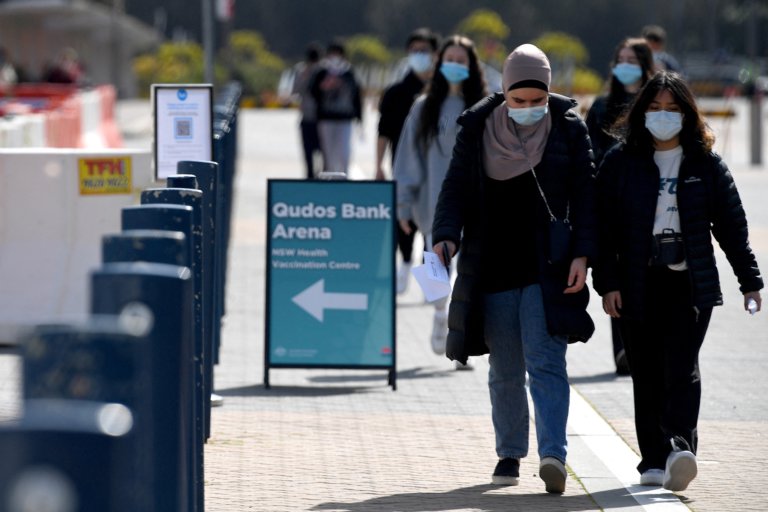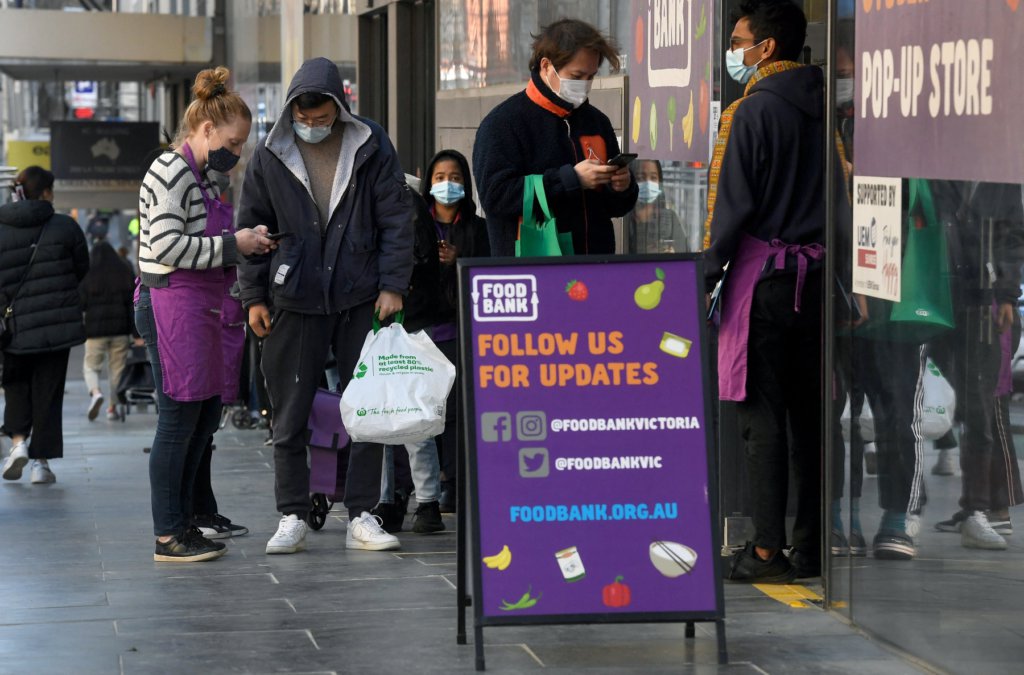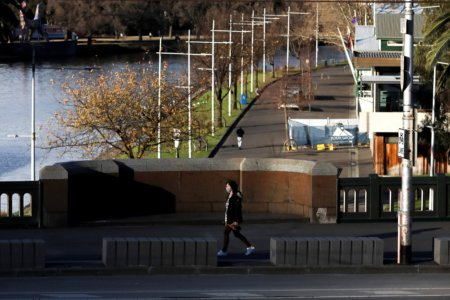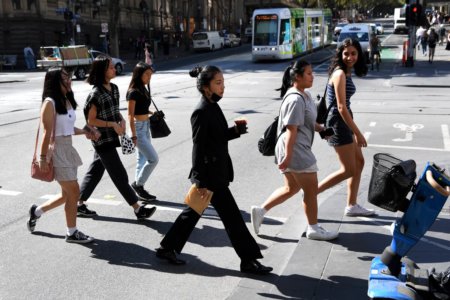
International students are not returning to universities in Australia as quickly as some might have anticipated.
International students have spent nearly two years locked out of Australia due to the country’s strict border controls.
While the border reopening in December came as a relief to thousands of stranded students clamouring to return, student sentiment had already taken a hit in the period when borders were closed.

International students queue outside a foodbank in Melbourne on August 13, 2021 as the city’s sixth lockdown has forced many international students who rely on casual work for income to turn to charities for help. Source: William West/AFP
Students slow to return to universities in Australia
During that time, the government had, on numerous occasions, shelved pilot plans for students’ return.
According to Al Jazeera, some 56,000 international students have already arrived to begin or resume studies at universities in Australia since the country reopened its borders, and another 50,000 have applied for student visas.
About 120,000 are still abroad for a host of reasons, it said. This includes Chinese students, who cannot leave their country due to ongoing border closures.
“Some of them won’t come back,” Universities Australia CEO Catriona Jackson told Al Jazeera.
“There’s no pretending we have not had a really hard time in the last two years. We’re not out of the woods yet but the pandemic has proved our universities are resilient.”
Quoting a survey by student support service provider Studiosity, the report said only 58% of international students currently enrolled at Australian universities plan on returning to campuses this year, with 41% of those planning to study elsewhere.
“Australia’s institutions were fully aware that the policy settings that have been in place for the past two years meant it would be difficult to simply turn the tap back on,” Andrew Barkla, CEO of international education support organisation IDP, was quoted saying.
“Students have grown tired of waiting to return.”
Separately, an expert opined that it will take a “number of years” for incoming student flows to return to pre-pandemic levels.
Quoting a report from credit risk research company S&P Global Ratings, The PIE News said the number of international students entering the country is down 75% from pre-pandemic levels, despite Australia’s borders now being open to fully vaccinated travellers – including students.
The report added that the number of Chinese student commencements is down almost 40% from 2019, and warned that fewer Chinese students in universities in Australia could cause a “split within the sector, as more prestigious universities soak up the smaller number of Chinese students”.
“We believe Australian universities will continue to attract international students, especially from Asia,” said Rebecca Hrvatin, an analyst at S&P Global Ratings.
“Growth in international student markets in the region include countries with a growing middle class, such as the subcontinent – India, Nepal, Pakistan – and southeast Asian countries – Vietnam, Indonesia, Philippines, Malaysia.”
Hrvatin predicts it will take a “number of years” for incoming student flows to return to pre-pandemic levels.
Fantastic to join Menteri Nadiem at the opening of @MonashUni‘s new 🇮🇩 campus today. I’m thrilled to see this 🌏world-class 🇦🇺 university establish its presence here in Jakarta, bringing new opportunities for high impact research & expanded academic offerings to 🇮🇩 students. pic.twitter.com/3LReJDGyQl
— Penny Williams (@DubesAustralia) April 14, 2022
Can satellite campuses woo students back?
Following the country’s “Fortress Australia” approach to the pandemic, the country introduced some policies to bolster its appeal as a study abroad destination – including the temporary removal of working hour caps, the visa refund scheme and the 485 visa renewals.
Some universities in Australia are also opening new campuses in Asia, where many of the country’s international students come from.
The University of Newcastle, for instance, opened a new campus in Singapore in February. It serves as a halfway house for international students from China.
The campus offers a programme where students can spend their first two years in China and second two years in Australia, said its global vice-chancellor Kent Anderson to Al Jazeera. “Now we’ve tweaked it to allow them to do one semester in Singapore before Australia to deliver a truly transnational education,” he said.
“We also have many students who left China before their border closed and Australia’s opened who are doing a semester in Singapore. Having a campus in Asia helps us be creative like that.”
Monash University also recently opened its new campus in Jakarta, Indonesia and is the first international university in the country.











